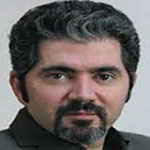Geographical Investigation of Crime Hot Spots in Zanjan City (Case Study: Drug-Related Crimes)
Author(s):
Abstract:
Introduction
Crime occurrence, especially drug-related crimes are among the most significant problems in Zanjan city which are considered as worrisome problem for police and urban managers in this city. What is more, crime can cause negative and unbearable effects on human, social and economical development. Also it can cause a sense of insecurity and pessimism in the society. In fact individual behavior is a product of an interaction between the person and the setting. Most criminological theories pay attention only to the first, asking why certain people might be more criminally inclined or less so. This neglects the second, the important features of each setting that help to translate criminal inclinations into action. One cannot commit a crime without overcoming its physical requirements. During recent decades some new approaches have focused on environmental criminology and the relations between crime and place. Methodology
This paper aimed at controlling the high-crime districts. In order to identify and analyze the spatial patterns of crime and crime facilitators in this city some statistical and graphic models and Geographical Information Systems (GIS) have been applied. This study is based on analytic-comparative method and the essential data and information has been collected through documentary and survey methods. All the drug-related crimes which are occurred in Zanjan city during a year have been examined in this article, which include drug dealing and drug abuse crimes. The spatial patterns of crime distribution in Zanjan city have been identified by using some statistical methods including: Mean Center, Standard Deviation Ellipse, Tests for Clustering, Nearest Neighborhood Index (NNI) and Quartic Kernel Density Estimation. Results And Discussion
This study shows that the Mean Center points for drug-related crimes can be used to generally indicate that drug offences show a greater tendency to occur in the central part of Zanjan city. Levels of dispersion can be presented using Standard Deviation Ellipses. The north-west, south-east orientation of drug-related crimes helps to describe the general direction toward which these crimes have a tendency to be patterned. Testing for clustering is the first step in revealing whether data have hot spots of crime. The NNI is a simple and quick method to test for evidence of clustering. The results of this study show that according to Nearest Neighborhood Index (NNI), spatial distributions of drug-related crimes in Zanjan city are significantly clustered which suggests the existence of hot spots and cool spots in the city area. Areas of concentrated crime are often referred to as hot spots. The most suitable method for visualizing crime data as a continuous surface is Quartic Kernel Density Estimation. According to this method, the major drug hot spot has been identified in Bisim district. Conclusion
Having many physical and demographical problems such as high population density, this area faces many restrictions in urban services like lack of some urban services and shortage of some others. However, urban manager and people in charge have tried to obtain some essential services for habitants of this area. Bisim is one of the two biggest informal settlements in Zanjan city which was established about 40 years ago due to high immigrations of rural people during that decade. Occupying 2.2 percent of the city area, Bisim has been gathered 10 percent of Zanjan city’s population. So this area has high population density in comparison to other parts of the city. In addition the major hot spot, two other slight hot spots have been understood in Hosseinie and Foroodgah quarters in Zanjan city. In order to improve security and reducing crimes especially drug-related areas in mentioned areas, these suggestions should be considered as a priority for people in charge of urban management as listed below: • Allocating some essential urban services in Bisim area and making balance in the type and composition of urban land use; • Locating and building some recreation grounds, parks, libraries and some other areas for entertaining youth and habitants of Bisim area; • Designing defensible spaces, rebuilding the urban abandoned areas and improving the light of streets during the night in order to stop criminals taking advantages of darkness; • Locating and building police station in the Bisim area in order to increase formal surveillance; and • Improving the physical conditions of streets in order to facilitate traffic and police patrolling.Keywords:
Bisim , Spatial pattern , Zanjan. , Drug , Related crimes , Hotspot
Language:
Persian
Published:
Human Geography Research Quarterly, Volume:42 Issue: 74, 2011
Pages:
41 to 59
magiran.com/p861616
دانلود و مطالعه متن این مقاله با یکی از روشهای زیر امکان پذیر است:
اشتراک شخصی
با عضویت و پرداخت آنلاین حق اشتراک یکساله به مبلغ 1,390,000ريال میتوانید 70 عنوان مطلب دانلود کنید!
اشتراک سازمانی
به کتابخانه دانشگاه یا محل کار خود پیشنهاد کنید تا اشتراک سازمانی این پایگاه را برای دسترسی نامحدود همه کاربران به متن مطالب تهیه نمایند!
توجه!
- حق عضویت دریافتی صرف حمایت از نشریات عضو و نگهداری، تکمیل و توسعه مگیران میشود.
- پرداخت حق اشتراک و دانلود مقالات اجازه بازنشر آن در سایر رسانههای چاپی و دیجیتال را به کاربر نمیدهد.
In order to view content subscription is required
Personal subscription
Subscribe magiran.com for 70 € euros via PayPal and download 70 articles during a year.
Organization subscription
Please contact us to subscribe your university or library for unlimited access!




